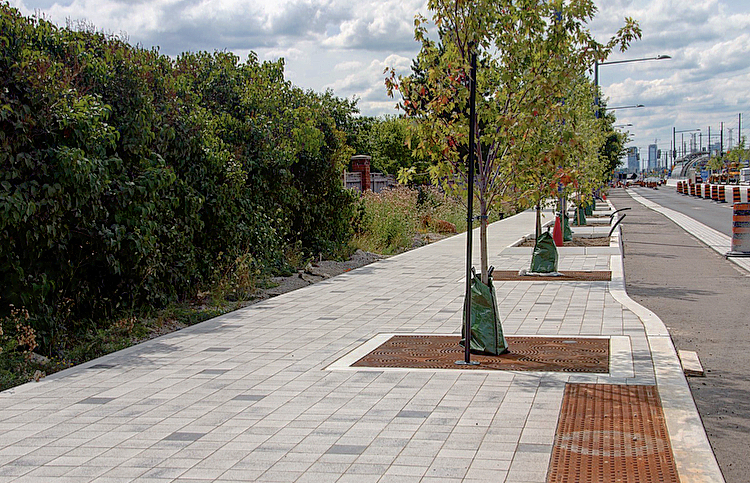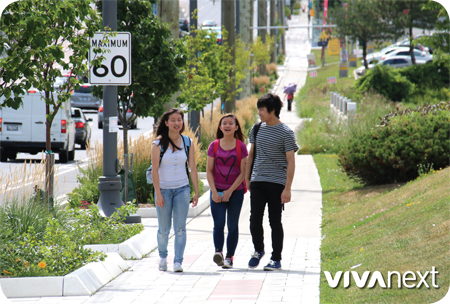
When building rapidways for generations to enjoy, it’s important to make sure that the end product meets the requirements we set out to build. That’s why you may see work activity in the first couple of years after infrastructure projects are done.
Deficiencies
Everything – from the paver stones on the sidewalk, to the glass in the canopies, to the red asphalt – is tested, inspected and verified by qualified engineers with a keen eye for detail. Anything that doesn’t make the grade is placed on a “deficiencies list” that the builder is responsible to remedy.
Warranty work
Much like when you buy a new house, it can take one or two years for the foundations to settle, and for you to make note of where the finishes are less than desirable. Then the contractor comes back to fix all the nail pops and cracks in the drywall, fill any gaps in the molding and repaint where necessary. It ensures that you are happy with the work, and you get the most out of your home. Warranty work is the same idea for our facilities, stations and rapidways.
Project managers of infrastructure projects call this the warranty work phase – an opportunity to catch any issues so that they can be fixed while the infrastructure is still under warranty – a period of two years. Note that the two-year warranty period starts when the project is handed over to York Region.
It often takes all the seasons in a full year to see how things weather in our climate, or perform once in use. You could see operations such as grinding and smoothing of curbs, fixing paint finishes and filling small cracks and, of course, taking note of anything else that needs work. Some upcoming warranty works may be much bigger, like asphalt replacement.
Finishing work
That’s why this spring on Highway 7 West and along Bathurst & Centre in Vaughan, and on Yonge Street in Newmarket, you’ll see project completion work such as planting trees and shrubs, raised bike lane paving, permanent pavement markings, station finishings like anti-grafitti application, and caulking, etc.
Whether you’re a regular transit rider, or are considering your first trip on the rapidway, know that we are working hard to provide you with a quality experience – and infrastructure that’s built to last.
For information about ongoing vivaNext projects, be sure to subscribe to email updates, and follow us on Twitter. You can also follow us on Instagram, YouTube and Facebook. Questions or comments? Comment below or email us at contactus@vivanext.com.


